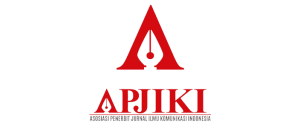PERAN HUMAS PT. PLN (PERSERO) APJ BANTEN UTARA SEBAGAI PROSES PEMECAHAN MASALAH (Studi Kasus Mengenai Pemadaman Penerangan Jalan Umum Kota Serang)
DOI:
https://doi.org/10.30656/lontar.v4i2.329Abstract
PT. State Electricity Company in implementing one of its functions to provide facilities public street lighting (PJU) whose benefits are perceived by the public. To provide a facility to the public, in case of discomfort felt by the public, then the PT. PLN (Persero) APJ North Banten will get feed-back negative. As in the case of a blackout PJU Serang are extinguished while the PT. PLN (Persero) APJ North Banten. The role of PR is at the forefront of the company, therefore if there are problems dealing with the public, public direct contact or not with the interests must be attentive to the problems of the company. This study on the Role of Public Relations of PT. PLN (Persero) APJ North Banten in extinguishing street lighting (PJU) Kota Serang. The role of public relations in PT. PLN (Persero) APJ North Banten as a function, communication strategy in order to create understanding through knowledge, and through these activities is expected to emerge changes impacting. The method used in this research is using qualitative research with case study method. Data were collected through interviews, observation, and documentation. As a basic analysis of the role of public relations researchers used the concept of Dozier and Glen M. Broom. While the sample used in this research is purposive sampling, the sampling of data by certain 'TOTAL consideration in this study used Through a process of research, the obtained results of his research, namely: that the role of PR PT. PLN (Persero) APJ North Banten as a public relations problem-solving process is defining the problem, solve problems and strategic planning for problem solvingDownloads
Published
Issue
Section
License
By submitting an article to the journal, the author(s) agree to transfer the published article's copyright to the journal, which will act as the publisher. This means the journal will have the right to publish the article in various forms, including reprints. The journal will maintain the publishing rights to the published articles.
In line with the license, authors and third parties (readers, researchers, and others) are allowed to share and adapt the material. In addition, the material must be given appropriate credit, provided with a link to the license, and indicated if changes were made. If authors remix, transform, or build upon the material, authors must distribute their contributions under the same license as the original.






